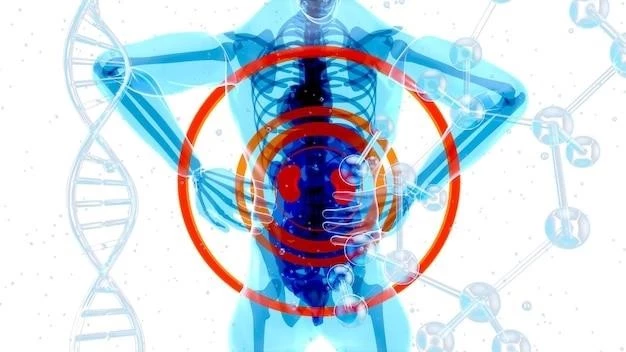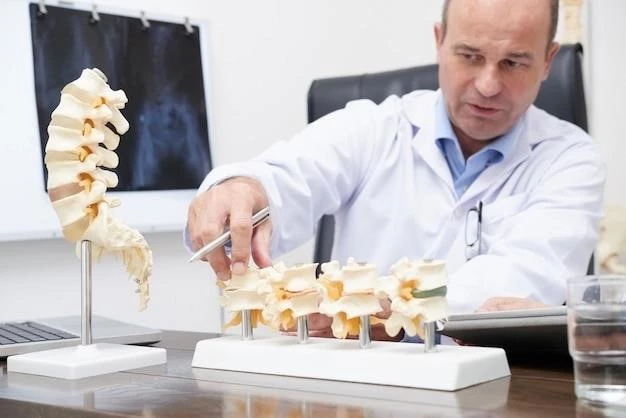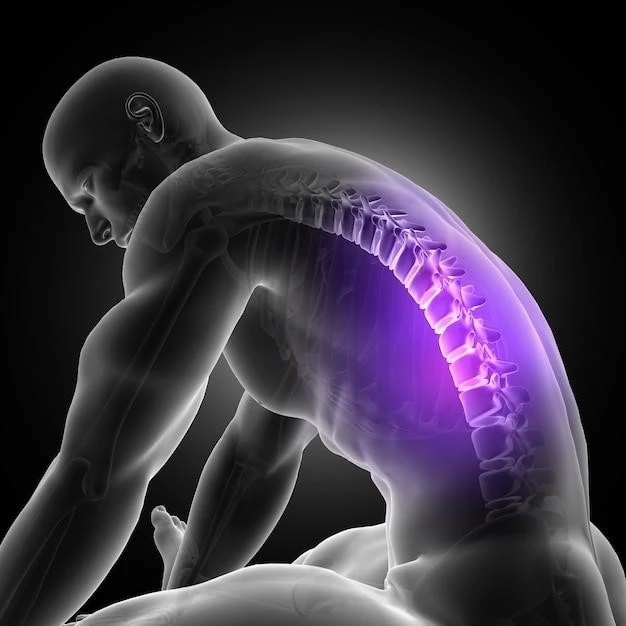Overview of Short Rib-Polydactyly Syndrome, Saldino-Noonan Type
Short Rib-Polydactyly Syndrome (SRPS) is an exceedingly rare lethal skeletal dysplasia distinguished by organ abnormalities, polydactyly, and a constricted thoracic cage. It is classified into four types, with Type I (Saldino-Noonan syndrome) being the most severe form. This syndrome presents major skeletal involvement, extremely short ribs, and other distinct characteristics affecting neonates. Historical reports by Saldino and Noonan in 1972 have contributed to the understanding of this complex syndrome.
Definition and Rarity
Short Rib-Polydactyly Syndrome (SRPS) is an extremely rare lethal skeletal dysplasia with a prevalence of 2.5-3.3 per 10,000 births. It is characterized by hypoplastic thorax, extremely short ribs, short limbs, and polydactyly. Saldino-Noonan Type, the most severe form, presents with constricted thoracic cage, organ abnormalities, and neonatal onset. This syndrome is classified into four types based on distinctive skeletal manifestations and genetic factors.
Characteristics of Saldino-Noonan Type SRPS
The Saldino-Noonan Type of Short Rib-Polydactyly Syndrome is characterized by neonatal onset, polydactyly, extremely short ribs leading to a constricted thoracic cage, and visceral abnormalities. This rare syndrome presents with major skeletal involvement, short limbs, and distinctive postaxial polydactyly, contributing to its severity.
Skeletal Anomalies
Saldino-Noonan Type of Short Rib-Polydactyly Syndrome is known for its distinct skeletal anomalies, including extremely short ribs leading to a constricted thoracic cage, short limbs, and unique postaxial polydactyly. These skeletal features play a crucial role in the diagnosis and severity assessment of this rare syndrome.
Visceral Abnormalities
Saldino-Noonan Type of Short Rib-Polydactyly Syndrome is characterized by a spectrum of visceral abnormalities, including thoracic dystrophy, hypoplastic lungs, liver and kidney malformations, and cardiac anomalies. These visceral features contribute significantly to the complexity and severity of the syndrome, impacting both prognosis and management strategies.
Historical Background of Saldino-Noonan Syndrome
The historical observations of Short Rib-Polydactyly Syndrome, particularly the Saldino-Noonan Type, date back to 1972. Initial descriptions by Saldino and Noonan highlighted the severe thoracic dystrophy٫ micromelia٫ and multiple internal congenital anomalies seen in affected infants٫ setting the groundwork for understanding this complex syndrome.
Early Descriptions by Saldino and Noonan
In 1972, Saldino and Noonan provided initial descriptions of Short Rib-Polydactyly Syndrome, specifically Type I — the Saldino-Noonan syndrome. Their observations highlighted severe thoracic dystrophy, micromelia, hypoplastic long bones, and multiple internal congenital anomalies in affected infants. Postaxial polydactyly was also noted, emphasizing the distinct clinical features of this syndrome.
Classification into Four Types
The Short Rib-Polydactyly Syndrome (SRPS) is classified into four types based on distinctive skeletal anomalies and genetic factors. Type I SRPS, known as the Saldino-Noonan syndrome, is the most severe form characterized by extremely short bones with narrowed metaphyses and compressed ribs affecting lung development.
Clinical Presentation and Symptoms
Short rib-polydactyly syndrome, notably the Saldino-Noonan type, manifests with severe neonatal symptoms including polydactyly, micromelia, and hypoplastic thorax. The syndrome’s clinical presentation involves multiple internal congenital anomalies and short limbs, contributing to its complex nature.
Neonatal Onset
Short Rib-Polydactyly Syndrome, particularly the Saldino-Noonan type, presents with a neonatal onset characterized by severe symptoms such as polydactyly, micromelia, hypoplastic thorax, and shortened tubular bones. These features are crucial in diagnosing the syndrome at an early stage.
Major Skeletal Involvement
The Saldino-Noonan Type of Short Rib-Polydactyly Syndrome exhibits significant skeletal involvement, with characteristics such as extremely short ribs, a constricted thoracic cavity, postaxial polydactyly, and micromelia. These skeletal abnormalities are key features defining the syndrome’s clinical presentation and severity.
Organ Abnormalities
Short Rib-Polydactyly Syndrome, Saldino-Noonan Type, is associated with a range of visceral abnormalities, including thoracic dystrophy, hypoplastic lungs, liver and kidney malformations, and cardiac anomalies. These organ-related issues significantly impact the comprehensive clinical picture of this syndrome.
Diagnosis and Prenatal Testing
Short rib-polydactyly syndrome, particularly the Saldino-Noonan type, is diagnosed based on clinical manifestations such as polydactyly, micromelia, hypoplastic thorax, and short limbs. Prenatal testing involves genetic analysis and ultrasound scans to identify skeletal anomalies and visceral abnormalities in affected fetuses.
Genetic Mutations and Hereditary Factors
The genetic basis of Short Rib-Polydactyly Syndrome, Saldino-Noonan Type, involves pathogenic variants that can be hereditary or occur spontaneously. These mutations play a crucial role in the development of the syndrome and its inheritance patterns, affecting key aspects of skeletal and organ development in affected individuals.
Prenatal Screening and Diagnosis
Prenatal screening and diagnosis of Short Rib-Polydactyly Syndrome, Saldino-Noonan Type, involve genetic analysis and ultrasound imaging to detect skeletal anomalies, polydactyly, and other visceral abnormalities in the developing fetus. Early identification through comprehensive prenatal testing aids in counseling and management decisions for affected pregnancies.

Management and Treatment Approaches
Management of Short Rib-Polydactyly Syndrome, specifically the Saldino-Noonan type, involves a multidisciplinary care team to address the complex needs of affected individuals. Supportive therapies aim to enhance quality of life and address medical challenges associated with the syndrome.
Multidisciplinary Care Team
Management of the Saldino-Noonan Type of Short Rib-Polydactyly Syndrome requires a specialized multidisciplinary care team comprising various healthcare professionals. The collaborative approach aims to address the diverse medical, developmental, and psychosocial needs of individuals affected by this complex syndrome.
Supportive Therapies
Supportive therapies form a vital component of managing Saldino-Noonan Type of Short Rib-Polydactyly Syndrome. These therapies focus on enhancing the quality of life for affected individuals and addressing specific medical challenges associated with the syndrome.

Prognosis and Complications
Neonatal mortality rates are significant in Short Rib-Polydactyly Syndrome, particularly the Saldino-Noonan type, due to complex skeletal and organ abnormalities. Long-term survivors may experience various complications affecting their quality of life.
Neonatal Mortality Rates
Short Rib-Polydactyly Syndrome, especially the Saldino-Noonan type, is associated with significant neonatal mortality rates attributed to the severity of complex skeletal and organ abnormalities present at birth. These high mortality rates underscore the critical nature of this syndrome from infancy.
Long-term Effects on Survivors
Long-term survivors of Short Rib-Polydactyly Syndrome, notably the Saldino-Noonan type, may experience a range of complications affecting their physical and emotional well-being. These effects can impact the quality of life and require ongoing monitoring and support.
Research and Advances in Understanding SRPS
Current studies and clinical trials are focused on further understanding the genetic basis, skeletal deformities, and organ abnormalities associated with Short Rib-Polydactyly Syndrome, Saldino-Noonan Type. Recent genetic discoveries offer insights into the pathophysiology of this rare syndrome.
Current Studies and Clinical Trials
Ongoing research focuses on unraveling the genetic underpinnings, skeletal anomalies, and organ issues associated with Short Rib-Polydactyly Syndrome, specifically the Saldino-Noonan Type. Recent studies and clinical trials aim to advance our understanding of this rare syndrome and explore potential therapeutic interventions.
Genetic Discoveries and Pathophysiology
Recent genetic discoveries in Short Rib-Polydactyly Syndrome, Saldino-Noonan Type, have shed light on the underlying pathophysiology driven by genetic mutations. Understanding these molecular mechanisms is vital in elucidating the intricate development of skeletal and organ abnormalities in this rare syndrome.
Genetic counseling for Short Rib-Polydactyly Syndrome, Saldino-Noonan Type, involves assessing risks, providing information on hereditary factors, and supporting family planning decisions. Understanding genetic mutations is crucial for informed family discussions and future considerations.
Genetic counseling for Short Rib-Polydactyly Syndrome, Saldino-Noonan Type, includes risk assessment, hereditary considerations, and assistance with family planning decisions. Understanding genetic mutations is crucial for informed family discussions and future planning.
Genetic Counseling and Family Planning
Genetic counseling involves evaluating risks, hereditary factors, and aiding in family planning decisions for Short Rib-Polydactyly Syndrome, Saldino-Noonan Type. Understanding genetic mutations is pivotal in guiding families towards informed choices.
Impact on Quality of Life for Patients
Physical challenges and functional limitations impact the quality of life for Short Rib-Polydactyly Syndrome, Saldino-Noonan Type patients. Emotional and social well-being of individuals with this rare syndrome also plays a crucial role in their overall quality of life.
Physical Challenges and Functional Limitations
Short Rib-Polydactyly Syndrome, Saldino-Noonan Type presents individuals with physical challenges such as extremely narrow thorax, short limbs, and postaxial polydactyly. These anatomical features contribute to functional limitations affecting the daily lives of the affected individuals.
Emotional and Social Well-being
Emotional and social well-being are crucial considerations for individuals with Short Rib-Polydactyly Syndrome, Saldino-Noonan Type. Coping with the physical challenges and unique anatomical features of the syndrome can impact an individual’s emotional and social interactions, highlighting the need for comprehensive support.
Support Resources and Patient Advocacy
Organizations provide assistance to individuals with Short Rib-Polydactyly Syndrome, Saldino-Noonan Type, offering support, guidance, and advocacy services. Peer support networks also play a crucial role in connecting patients and families facing this rare syndrome.
Organizations Providing Assistance
Various organizations offer support, guidance, and advocacy services to individuals and families affected by Short Rib-Polydactyly Syndrome, Saldino-Noonan Type. These organizations play a vital role in providing assistance and resources to navigate the challenges associated with this rare syndrome.
Peer Support Networks
Peer support networks play a pivotal role in providing emotional and informational assistance to individuals and families affected by Short Rib-Polydactyly Syndrome, Saldino-Noonan Type. These networks foster connections and understanding among those navigating the challenges of this rare syndrome.
Case Studies and Medical Reports
Notable cases and outcomes regarding Short Rib-Polydactyly Syndrome, Saldino-Noonan type, showcase the clinical complexities and diagnostic challenges associated with this rare genetic syndrome. These case studies contribute to the medical understanding and management of affected individuals.
Notable Cases and Outcomes
Notable cases and outcomes provide valuable insights into the clinical complexities and diagnostic challenges of Short Rib-Polydactyly Syndrome, Saldino-Noonan type. These cases contribute significantly to the medical understanding and management of this rare genetic syndrome.
Scientific Publications and Research Findings
Scientific publications and research findings provide valuable insights into the diagnostic challenges and management strategies for Short Rib-Polydactyly Syndrome, Saldino-Noonan type. These studies contribute to the evolving understanding of this rare genetic syndrome.
Specialized diets cater to the nutritional needs of individuals with Short Rib-Polydactyly Syndrome, Saldino-Noonan Type. Adequate nutrition plays a crucial role in supporting the overall health and well-being of affected individuals.
Dietary Considerations and Nutritional Needs
Specialized diets tailored to the nutritional requirements of individuals with Short Rib-Polydactyly Syndrome, Saldino-Noonan Type, are vital for ensuring adequate nourishment and supporting overall health. Proper nutrition plays a critical role in managing the unique challenges associated with this rare genetic condition.
Importance of Adequate Nutrition
Adequate nutrition is essential for individuals with Short Rib-Polydactyly Syndrome, Saldino-Noonan Type, to support overall health and well-being. Specialized diets tailored to meet their unique nutritional needs contribute significantly to managing the challenges associated with this rare genetic condition.
Culinary Insights⁚ Short Rib Recipes and Cooking Tips
Gourmet preparations and culinary delights await with Parisian-style Gnocchi with Braised Short Ribs. Enjoy a flavorful dish meticulously crafted to tantalize taste buds with every bite!
Gourmet Preparations and Culinary Delights
Indulge in culinary masterpieces like Slow-Cooked Short Ribs with a delectable onion and garlic infusion. Experience the succulent meat falling off the bone, paired perfectly with buttery mashed potatoes for a comforting meal.
Cooking Techniques for Tender Short Ribs
Master the art of cooking tender Short Ribs by slow-cooking them until fall-off-the-bone perfection. Sear the ribs to lock in flavor, then simmer gently for a meltingly tender texture. Enjoy the rich and savory taste of perfectly cooked Short Ribs!
